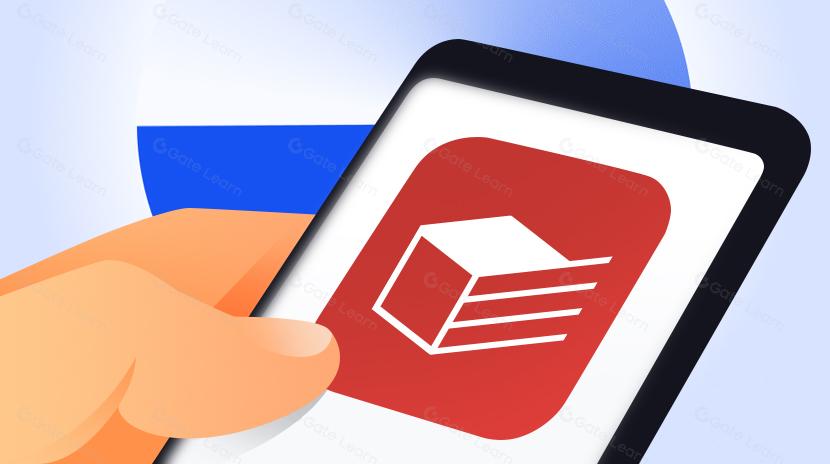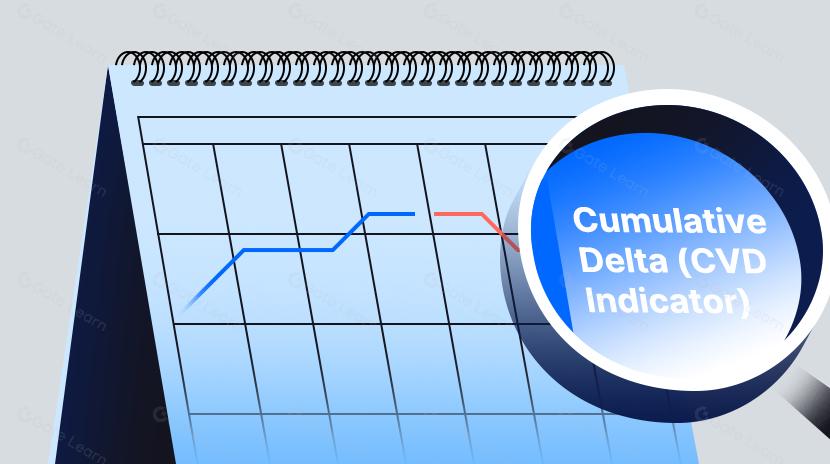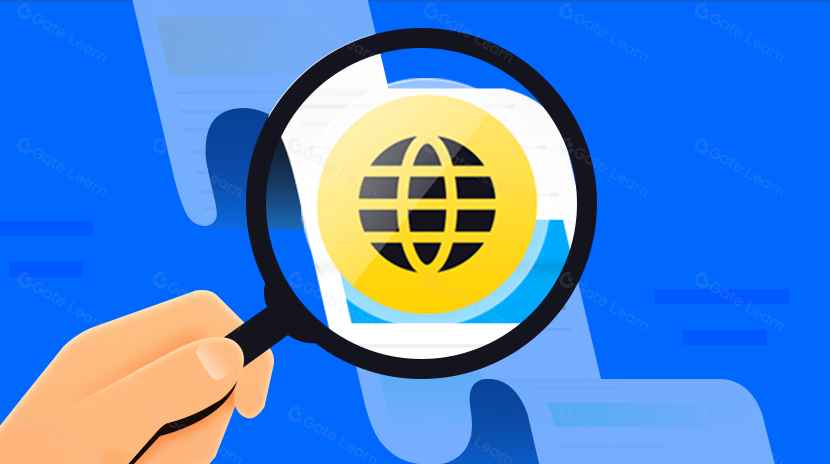Перспективы применения технологии Блокчейн в электронном правительстве и государственных услугах
Введение
С быстрым развитием информационных технологий сферы электронного правительства и государственных услуг проходят глубокие цифровые трансформации. Правительства по всему миру увеличивают инвестиции для содействия инициативам по развитию электронного правительства с целью повышения административной эффективности, оптимизации предоставления государственных услуг и улучшения прозрачности и достоверности государственных органов. Однако в этом процессе сохраняются проблемы, включая препятствия для обмена данными между отделами (что приводит к информационным островам), растущие опасения в отношении безопасности и конфиденциальности данных и громоздкие традиционные рабочие процессы с избыточным ручным вмешательством. Технология блокчейн предлагает инновационные решения для этих проблем.
Как технология распределенного реестра, блокчейн обладает основными атрибутами, такими как неизменность, децентрализация и отслеживаемость, обеспечивая подлинность и целостность данных, а также облегчая обмен данными между отделами и сотрудничество. Функциональность смарт-контрактов позволяет автоматизировать выполнение бизнес-процессов, сокращая вмешательство человека и повышая справедливость и эффективность государственных услуг. Например, эстонская система электронного правительства, основанная на блокчейне, упрощает проверку личности граждан, управление медицинскими записями и регистрацию бизнеса, значительно повышая потенциал управления и качество услуг. Таким образом, блокчейн обладает огромным потенциалом в электронном правительстве и государственных услугах, прокладывая путь к более эффективному, прозрачному и безопасному будущему, обеспечивая при этом превосходный и удобный опыт для граждан и бизнеса.
Обзор технологии блокчейн
Блокчейн - это децентрализованная распределенная технология баз данных, которая устраняет посредников и доверительные институты, позволяя участникам проводить транзакции и обмениваться информацией непосредственно в доверительной среде. Первоначально предложенный создателем биткоина, Сатоши Накамото, блокчейн был тесно связан с криптовалютами. Однако его применения с тех пор расширились за пределы финансов на управление цепочками поставок, здравоохранение, защиту интеллектуальной собственности, системы голосования и многое другое.
Распределенная книга
Распределенный реестр относится к системе, в которой записи транзакций поддерживаются коллективно несколькими узлами в разных местах, каждый из которых хранит полную копию реестра. Такая конструкция позволяет узлам совместно проверять транзакции и обеспечивать их легитимность, повышая безопасность и надежность. Изменение данных потребовало бы одновременного изменения большинства узлов, что делает подделку практически невозможной.

Источник: https://corporatefinanceinstitute.com/resources/cryptocurrency/distributed-ledgers/
Механизмы консенсуса
Механизмы консенсуса - это правила и алгоритмы, обеспечивающие согласие между узлами сети блокчейн. Поскольку у блокчейн нет центрального органа управления, узлы должны достигать консенсуса автономно. Основные механизмы включают в себя Proof of Work (PoW), Proof of Stake (PoS) и DeleGate.iod Proof of Stake (DPoS). Например, Биткойн использует PoW, где подделка записей потребовала бы контроля более 51% узлов сети - почти невозможного достижения.

Источник: https://hacken.io/discover/consensus-mechanisms/
Технологии шифрования
Блокчейн использует криптографические алгоритмы для обеспечения целостности и безопасности данных. Распространенные техники включают хэш-функции (например, SHA-256 в Bitcoin) и асимметричное шифрование. Хэш-функции преобразуют входные данные в фиксированную длину вывода (хэши), обеспечивая уникальность и необратимость. Асимметричное шифрование использует пары открытого и закрытого ключей для безопасных транзакций, где открытый ключ распространяется, а закрытый ключ остается конфиденциальным.
Умные контракты
Смарт-контракты - это самовыполняющиеся программы, автоматизирующие контрактные условия при выполнении заранее определенных условий. Хранящиеся в блокчейне, они снижают транзакционные издержки и посредников, улучшая эффективность. Платформа Ethereum популяризировала смарт-контракты, позволяя создавать сложные децентрализованные приложения.
Текущие события
Блокчейн развился от Биткойна к более широким применениям, таким как смарт-контракты Ethereum. Сегодня он используется в финансах, цепях поставок, здравоохранении и государственных службах, и постоянно исследуются новые случаи использования.
Примеры приложений
- Система электронного правительства Эстонии: Блокчейн облегчает верификацию идентификационных данных граждан, управление медицинскими записями и регистрацию бизнеса, повышая стандарты управления и обслуживания.
- Финансы: Блокчейн оптимизирует международные платежи, улучшая скорость и эффективность затрат.
- Цепи поставок: повышает прозрачность и прослеживаемость, снижая мошенничество и поддельные товары.
Эти примеры применения технологии блокчейн демонстрируют её огромный потенциал в различных областях. Поскольку технология продолжает совершенствоваться и углублять свои применения, ожидается, что блокчейн в будущем разблокирует ещё большие возможности.
Текущий статус и вызовы электронного правительства и государственных служб
В последние годы электронное правительство достигло значительных успехов во всем мире. Правительства увеличили инвестиции в цифровое преобразование для повышения административной эффективности, оптимизации предоставления государственных услуг и улучшения прозрачности и доверия. В Китае, например, развитие электронного правительства происходит особенно быстро. Правительства всех уровней активно создали онлайн-платформы государственных услуг, позволяющие обрабатывать широкий спектр административных услуг цифровым образом. Во время пандемии COVID-19 национальная интегрированная платформа государственных услуг ввела более 700 высокочастотных услуг, дополнительно улучшая индекс развития электронного правительства. Мобильные каналы государственных услуг, такие как приложения, мини-программы и официальные аккаунты, расширили охват, включая высокочастотные сценарии, такие как дела сообщества, здравоохранение и транспорт, расширяя удобные услуги до уровня округов.
Текущий статус общественных услуг
В секторе государственных услуг цифровая трансформация в здравоохранении, образовании и занятости продвигается стабильно, хотя остается значительное пространство для улучшений. Многие страны цифровизировали определенные государственные услуги через электронные платформы электронного правительства, такие как онлайн-консультации по медицине, дистанционные образовательные курсы и порталы с информацией о занятости, обеспечивая граждан более удобными сервисными услугами. Однако эти услуги все еще сталкиваются с ограничениями в покрытии, глубине и пользовательском опыте, требуя дальнейшей оптимизации и расширения.
Проблемы
Несмотря на достижения в цифровой трансформации, электронное правительство и государственные службы продолжают сталкиваться с многочисленными вызовами:
- Барьеры обмена данными: Данные, изолированные между отделами, создают «острова информации», затрудняя интеграцию и использование ресурсов данных, что снижает эффективность межотделенческих услуг. Например, бизнесу и гражданам часто приходится повторно представлять документы при выполнении межведомственных процедур, что увеличивает затраты и время обработки.
- Проблемы доверия и безопасности: Опасения по поводу безопасности данных, защиты конфиденциальной информации, подлинности и рисков вмешательства стали критическими ограничениями для развития электронного правительства и государственных услуг. Сети государственных органов сталкиваются с угрозами, такими как кибератаки и утечки данных, что требует более сильных мер безопасности.
- Неэффективные процессы: громоздкие и времязатратные традиционные рабочие процессы снижают эффективность обслуживания и удовлетворенность пользователей. Например, некоторые административные процессы утверждения по-прежнему требуют многоуровневых проверок между отделами, что приводит к продолжительному времени обработки.
- Региональные различия и правовые пробелы: Неравномерное развитие регионов и отставание правовых рамок также затрудняют прогресс. В Китае, например, цифровые возможности прибрежных районов значительно превосходят те, что у центральных и западных областей, и неравенства в обслуживании городских и сельских районов остаются явно выраженными. Кроме того, нерешенные правовые вопросы, такие как действительность электронных документов и владение данными, мешают переходу к бумажному управлению.
Более того, такие проблемы, как неравномерное региональное развитие и отставание правовых рамок, продолжают ограничивать развитие электронного правительства и государственных услуг. Например, в Китае уровень цифровизации государственных услуг на восточных побережьях значительно превышает уровень центральных и западных районов, при этом прослеживается выраженное городско-сельское разделение в возможностях оказания услуг. Кроме того, институциональные разрывы, включая отсутствие четкой юридической значимости для электронных документов и неопределенные права на владение данными, затрудняют прогресс в направлении безбумажного управления.
Сферы применения блокчейна в электронном правительстве и государственных службах
Поделиться и управлять данными государственных органов
Блокчейн играет решающую роль в обеспечении безопасного и эффективного обмена данными между государственными ведомствами за счет создания децентрализованных, неподверженных вмешательству платформ.
- Интегрированные платформы обмена данными: Системы на основе блокчейна разрушают междуотделные силосы данных. Например, Администрация городского правительства Пекина реализовала решения "блокчейн+государственные службы", где запросы данных отделов, записи об обмене и журналы административной деятельности неизменно записываются в цепочке. Это оптимизировало обработку документов для граждан и бизнеса, улучшая при этом прослеживаемость данных.
- Провенанс данных и аудит: неизменный реестр технологии позволяет точно отслеживать потоки данных. Проект «Directory Blockchain» Пекина связывает мониторинг изменения данных в реальном времени из 53 отделов с регистрацией полного доступа, решая проблемы доверия в совместном использовании данных между агентствами.
Аутентификация и авторизация цифровой идентификации
Блокчейн позволяет создавать единые цифровые идентификаторы, защищая конфиденциальность с помощью криптографических контролов.
- Проверка личности на различных платформах: платформа «Ganfutong 3.0» провинции Цзянси использует функции защиты от подделки блокчейна для обеспечения мобильных одобрений «нулевого контакта» и сервисов без сертификатов, гарантируя согласованность данных и функциональную синхронизацию.
- Прозрачное управление авторизацией: граждане могут отслеживать все действия по авторизации и использование сертификатов через записи блокчейна, создавая ответственное и сохраняющее конфиденциальность управление доступом.
Умные контракты для административных процессов
Самовыполняющиеся контракты автоматизируют бюрократические рабочие процессы для устранения задержек и человеческих ошибок.
- Автоматическое утверждение: Заявки на разрешение и распределение субсидий обрабатываются с помощью заранее определенных правил. Подходящие заявки автоматически утверждаются, в то время как отклоненные случаи получают мгновенные, проверяемые объяснения.
- Исполнение государственно-частного партнерства (ГЧП): Правительство заключает контракты с частными организациями программно, с использованием блокчейна для обеспечения соблюдения условий и прозрачного урегулирования споров.
Преимущества и ценность приложений блокчейн
Повышение прозрачности и доверия
Прозрачность блокчейна позволяет удобно запрашивать и проверять данные и операционные процессы правительства, что эффективно повышает прозрачность государственной работы и улучшает доверие и удовлетворенность общественности. Например, правительство создало систему электронного правительства на основе блокчейна в Эстонии, обеспечивая эффективное и удобное обслуживание различных государственных служб, таких как проверка личности граждан, управление медицинскими записями и регистрация бизнеса. Это значительно улучшило возможности управления и уровень обслуживания правительства.
Усиление безопасности и защиты конфиденциальности
Технология блокчейн использует передовые алгоритмы шифрования, такие как асимметричное шифрование и хэш-функции, для шифрования данных, обеспечивая безопасность во время хранения и передачи. Кроме того, распределенная архитектура блокчейн и характеристики защиты от подделок обеспечивают крепкую поддержку для защиты конфиденциальности данных. Например, в сфере здравоохранения блокчейн может интегрировать данные о здоровье, оптимизировать медицинские процессы, способствовать институциональному сотрудничеству и обеспечивать конфиденциальность пациентов.
Оптимизация бизнес-процессов и эффективность
Функциональность смарт-контрактов блокчейна автоматизирует бизнес-процессы, сокращая человеческое вмешательство и громоздкие промежуточные этапы, значительно повышая эффективность и качество государственных услуг. Например, в административных утверждениях смарт-контракты могут автоматически проверять заявки на основе заранее установленных правил, утверждая те, которые соответствуют критериям, и отклоняя те, которые не соответствуют, предоставляя причины для отклонения.
Содействие межведомственному сотрудничеству и инновациям
Технология блокчейн предоставляет общую, надежную платформу данных среди различных отделов, разрушая силосы данных и способствуя межотделочному деловому взаимодействию и обмену данными. Например, Администрация города Пекин исследует сочетание технологии блокчейн с обменом государственными данными, создавая несколько сценариев «блокчейн + государственные службы».
Проблемы и риски
Риск централизации
Консорциальные цепи обычно управляются небольшим числом основных участников или институций, что может привести к централизованному принятию решений. Например, отделы государственных служб часто назначаются узлами-организаторами, ответственными за ведение бухгалтерского учета, депонирование данных, их извлечение и разрешения на использование в сценариях государственных служб. Такая централизованная структура управления может привести к тому, что консорциальные цепи будут напоминать традиционные централизованные системы, ослабляя децентрализованное преимущество блокчейна. Более того, централизованное управление может привести к неравномерному распределению ресурсов, конфликтам интересов и повлиять на справедливость и устойчивость консорционной цепи.
Также высокая централизация может вызвать сомнения в подлинности внутренних данных. Если внутренние члены консорциумной цепи сговорятся, они теоретически могут подделать данные на цепочке, подрывая достоверность данных. Например, в государственных службах, если участники замышляют подделать данные транзакций, это может вызвать кризис доверия, повлиять на стабильность и доверие к всей экосистеме консорциумной цепочки.
Отсутствие стандартов и регулирования
Глобальные регулирования блокчейна и криптовалют различаются в разных странах, и неопределенность политики увеличивает рыночный риск. Новые бизнес-модели в рамках Web3.0 сталкиваются с недостаточными правовыми рамками, сталкиваются с проблемами, такими как владение цифровыми активами и защита интеллектуальной собственности данных. Например, воспроизводимость данных усложняет определение оригинальности и уникальности, усиливая споры об интеллектуальной собственности. В Китае приложения блокчейна в финансах, здравоохранении, образовании и других областях увеличиваются, но улучшение соответствующих законов и нормативов по-прежнему требует времени.
Риски конфиденциальности и безопасности
Несмотря на высокий уровень безопасности блокчейна, у него все еще есть проблемы, такие как атаки на 51% и уязвимости умных контрактов. Прозрачность блокчейна также вызывает опасения относительно конфиденциальности данных и утечки чувствительной информации. В области здравоохранения блокчейн может помочь создать безопасные и надежные платформы обмена электронными медицинскими записями, однако защита конфиденциальности пациентов остается ключевой проблемой. Например, Walmart подал патент в 2016 году на хранение медицинских записей пациентов в базе данных блокчейна с использованием носимых устройств и биометрической технологии для передачи и расшифровки записей.
Осведомленность и принятие общественности
Технология блокчейн и концепции и приложения Web3.0 пока не получили широкого распространения, и общественное осознание и принятие должны улучшиться. Понимание общественности о блокчейне ограничено, требуется больше продвижения и образования для повышения доверия и знакомства с технологией. Например, многие пользователи до сих пор не знакомы с цифровыми идентификаторами и децентрализованными приложениями, что ограничивает широкое принятие блокчейна в электронном управлении и государственных услугах. В Китае приложения блокчейн в финансах, здравоохранении, образовании и других областях увеличиваются, однако понимание и принятие общественности все еще нуждаются в дальнейшем развитии.
Тенденции будущего развития и перспективы
Технологические инновации и интеграция
С постоянным развитием технологий интеграция блокчейна с искусственным интеллектом (ИИ), интернетом вещей (IoT) и большими данными углубится, расширяя границы его применения. Например, ИИ может оптимизировать разработку умных контрактов блокчейна, автоматически обнаруживать уязвимости и улучшать качество кода. В то же время блокчейн предоставляет ИИ надежные источники данных, решая проблемы смещения и подделки данных. В IoT блокчейн обеспечивает безопасность и достоверность передачи данных между устройствами, обеспечивая автономное взаимодействие устройств.
Стандартизация и развитие регулирования
Установление единой системы стандартов и регулирующей структуры критично для здорового развития блокчейна. В настоящее время глобальные регулирования блокчейна и криптовалют различаются, и неопределенность политики увеличивает рыночные риски. Например, Европейский союз принял новые регулирования MiCA к концу 2024 года для обеспечения прозрачных транзакций и соблюдения операций с криптовалютными активами. В Китае приложения блокчейна в финансах, здравоохранении, образовании и других областях увеличиваются, но соответствующие законы и регулирования все еще нуждаются в улучшении.
Глобальное сотрудничество и обмен
Укрепление международного сотрудничества и изучение опыта других стран в области применения блокчейна совместно способствуют глобальному принятию технологии. Например, правительство Андхра-Прадеш, Индия, использовало блокчейн для реформы процессов регистрации земли, установив цифровую систему регистрации земли, которая улучшила прозрачность и эффективность сделок. Правительство Эстонии создало ведущую в мире систему электронного пребывания, используя блокчейн для безопасного хранения и аутентификации информации о личности граждан. Эти успешные случаи предоставляют ценные идеи для других стран.
Заключение
Технология блокчейн демонстрирует огромный потенциал в электронном управлении и общественных службах, эффективно решая существующие проблемы, такие как обмен данными, доверие и безопасность, и эффективность процессов. Путем создания платформ интеграции и обмена данными, обеспечения аутентификации цифровой идентичности, оптимизации управления электронными сертификатами, улучшения качества общественных услуг и продвижения применения смарт-контрактов, блокчейн значительно повышает эффективность государственного управления, прозрачность и доверие, улучшая при этом безопасность данных и защиту конфиденциальности.
Хотя остаются некоторые проблемы с технологической зрелостью, стандартизацией, защитой конфиденциальности и осведомленностью общественности, с постоянными достижениями в области инноваций и интеграции, постепенным установлением стандартов и правил, укреплением глобального сотрудничества и непрерывным расширением сценариев применения, ожидается, что блокчейн изменит модели электронного управления и обслуживания общественности в будущем. Это обеспечит гражданам и бизнесу более эффективные, удобные и надежные сервисные услуги, способствуя модернизации систем и возможностей социального управления.
Похожие статьи

Что такое Tronscan и как вы можете использовать его в 2025 году?

Что такое индикатор кумулятивного объема дельты (CVD)? (2025)

Что такое Нейро? Все, что вам нужно знать о NEIROETH в 2025 году

Что такое Solscan и как его использовать? (Обновление 2025 года)

15 криптовалютных проектов уровня 1 (L1), на которые стоит обратить внимание в 2024 году
